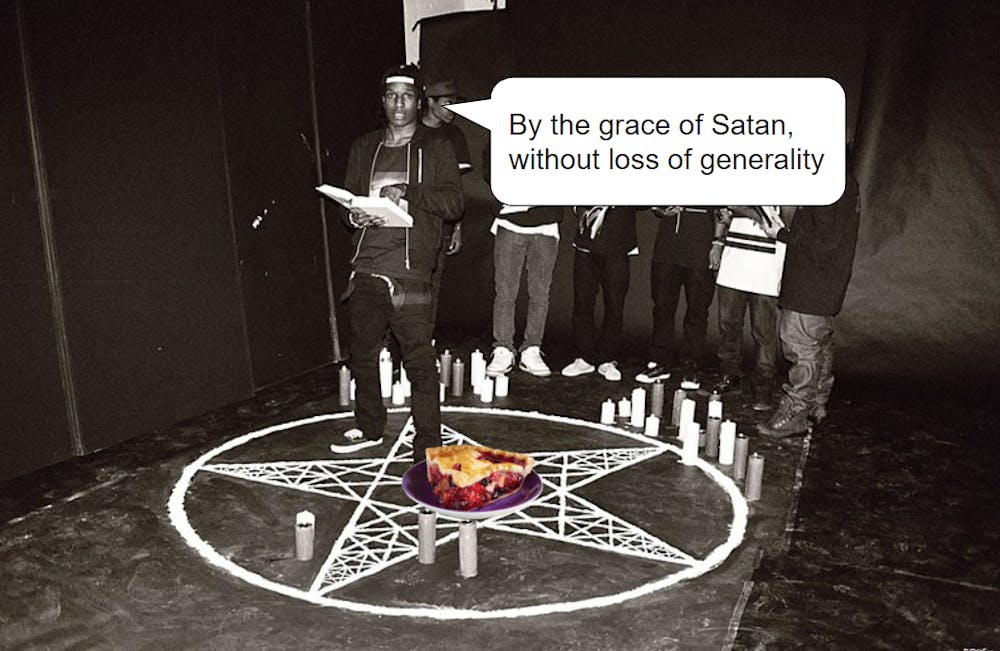Pie in Center of Graph K=5: How To Conjure a CIS 160 TA


It was 4 in the morning, and freshman Noslee Pfordays was still floundering with his CIS 160 problem set. He had been staring at the same problem for the past 5 hours, but he just could not figure out how many gangsters were expected to get their hat back. He had posted on Piazza, but his post had gotten buried in the never-ending waterfall of posts.
“I was on the verge of giving up,” said Pfordays. “I was seriously considering dropping out of CIS, and switching to a major in economics. I just couldn’t take it anymore”
Desperate for help, he was even reading the non-top responses on Stack Overflow.
“That’s when I came across something that might help me,” said Pfordays. “The comment provided a method for instantly summoning TAs.”
Following the instructions on Stack Overflow, he cleared out a spot on his clothes-littered dorm floor. Then he brewed a cup of instant coffee, and then poured it out on the floor in the orientation instructed by the Stack Overflow comment. Unbeknownst to him, it was the complete graph K=5, the almighty symbol of the CIS 160 TAs. Next, he placed a pie from Acme in the center of the graph. The pie represented the principle of inclusion-exclusion, another mysterious concept of CIS 160. Then, as instructed, he murmured “without loss of generality”.
Suddenly, his phone buzzed. It was a notification from Piazza that his question was answered by an instructor. An instant later, there was a knock on his door. He opened it, and it was his CIS 160 TA, holding a box of donuts and her beat-up MacBook with a page open to Latex.
“I heard you needed help with the second question on the homework?” she said.
After a brief explanation by his TA, Pfordays was relieved but annoyed that the answer was 1.